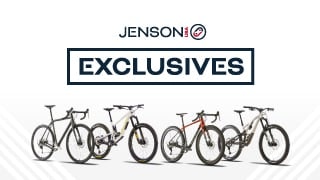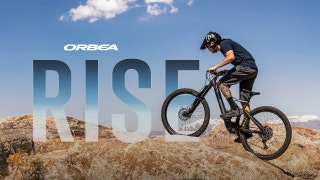Featured Brands
Recommended Products
Get free shipping, on most items, with your $50 purchase today! Same day shipping on most orders if placed by 3pm PST.
PLEASE NOTE:
This offer is only available to physical shipping addresses in the 48 continental United States (no PO Boxes), and some exclusions apply.
Oversize Charges
Some large and/or heavy items are subject to additional oversize charges that are separate from standard shipping costs.
Bike Build Process
All bikes are built, tested, tuned, and ready to ride upon shipment. The bike build process typically takes 2-3 days to complete depending on the bike model and the complexity of the build.
Stock Status
Orders for in-stock items placed by 3PM PST usually ship on the same day. Orders that include special-order or backordered items may be subject to shipping delays depending on product availability. Refer to estimated delivery times in cart when selecting shipping options.

Our Gear Advisors are Ready to Help.
Whether you’re shredding backyard singletrack, railing through the final corner of a high speed road race, or just spinning along a leisurely path soaking in the sights, bike tires have an immense effect on how your two-wheeler performs. Traction, speed, and comfort can all be enhanced (or diminished) depending on the type of bike tires you choose and how you set them up.
JensonUSA carries a massive inventory of bike tires, ranging from extra wide studded fat bike offerings, to ultra-supple cotton-casing tubular road bike options, to just about everything in between. When choosing your next set of bike tires, start by determining intended use, with the two main options being road (aka pavement) or mountain bike (aka dirt).
Next you’ll need to consider size starting with diameter. On the road side 700c bike tires represent the overwhelming majority, but there are a handful of adventure/gravel drop bar bikes that utilize smaller 650b offerings due to their wider girth, which in turn can deliver a smoother ride and better traction over rough terrain. Mountain bikes, on the other hand, come in two primary sizes, 29” and 27.5”, though there are still many older bikes (along with contemporary fat bikes) that run 26” inch tires.
If you don’t know what diameter tires are currently on your bike, take a look at the sidewall. It’s almost always printed on there somewhere, though it can sometimes be tough to find so look closely.
Bike tires width is the next key metric. There are lots of theories about what width makes sense for what bike and riding style. But generally speaking you’ll want a narrower tire for traditional road riding (usually 23mm-28mm), while wider tires in the 30mm-36mm range are best for gravel, cyclocross, and general adventuring. These wider tires are likely to be more durable and have slightly toothier tread than their smoother road-oriented counterparts. Here the tradeoff is between traction and rolling speed, with smoother tires being faster but also offering less grip.
It’s a similar story with mountain bike tires. Most cross-country bikes, which are typically faster going uphill but less capable on technical and rough descents, will have tires in the 2.0” to 2.3” width range. The tread on these tires is also likely to be less pronounced, which helps them carry speed better at the expense of traction and grip. Conversely, mountain bike tires designed for trail, enduro, and downhill use are progressively wider, heavier, and more durable, starting at 2.3” and going all the way to 2.8” and even 3.0”. The latter two widths are also referred to as plus size, and are revered for their superb traction, but come with the expense of extra weight and slower rolling speed. Lastly, there are fat bike tires, which range from 26x4.0” all the way to 26x5.2”, with the wider tires offering more float in loose sand and deep snow.
No matter their size or width, the majority of mountain bike tires these days are tubeless, which allows you to run lower — traction enhancing — tire pressure without the fear of pinch flatting your inner tube. On the road side, tubeless technology is slowly gaining some acceptance, especially for cyclocross and gravel use. But tubed clincher tires still represent the majority for standard road bikes.
Bike tire compound and construction is another important factor to weigh. Tire manufacturers have a wide variety of names for the compounds they use, but generally you’ll be weighing factors such as weight, durability, puncture protection, wet weather grip, ride quality, and price when choosing between various tire compounds, construction designs, and tread shape and layout.
Whichever type of bike tires you need, JensonUSA has you covered with a huge inventory that covers all the various types, sizes, and price points. We stock bike tires from popular brands like Maxxis, Vittoria, Continental, Kenda, Michelin, Goodyear, Surly, Schwalbe, Hutchinson, Panaracer, and many others. If you have any questions about tires, call one of our Gear Advisors at 951-234-7554. They'll help get you rolling in the right direction.




